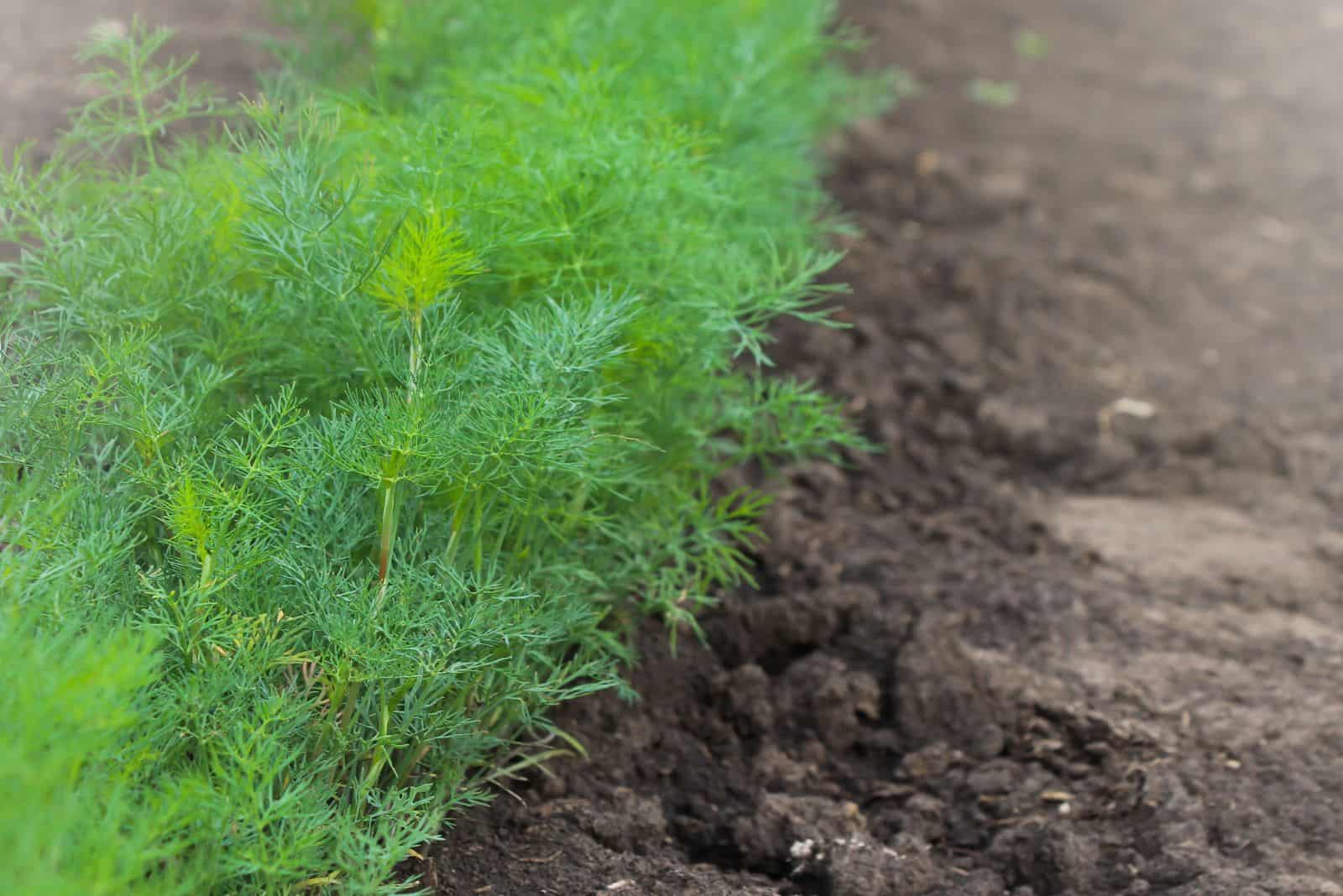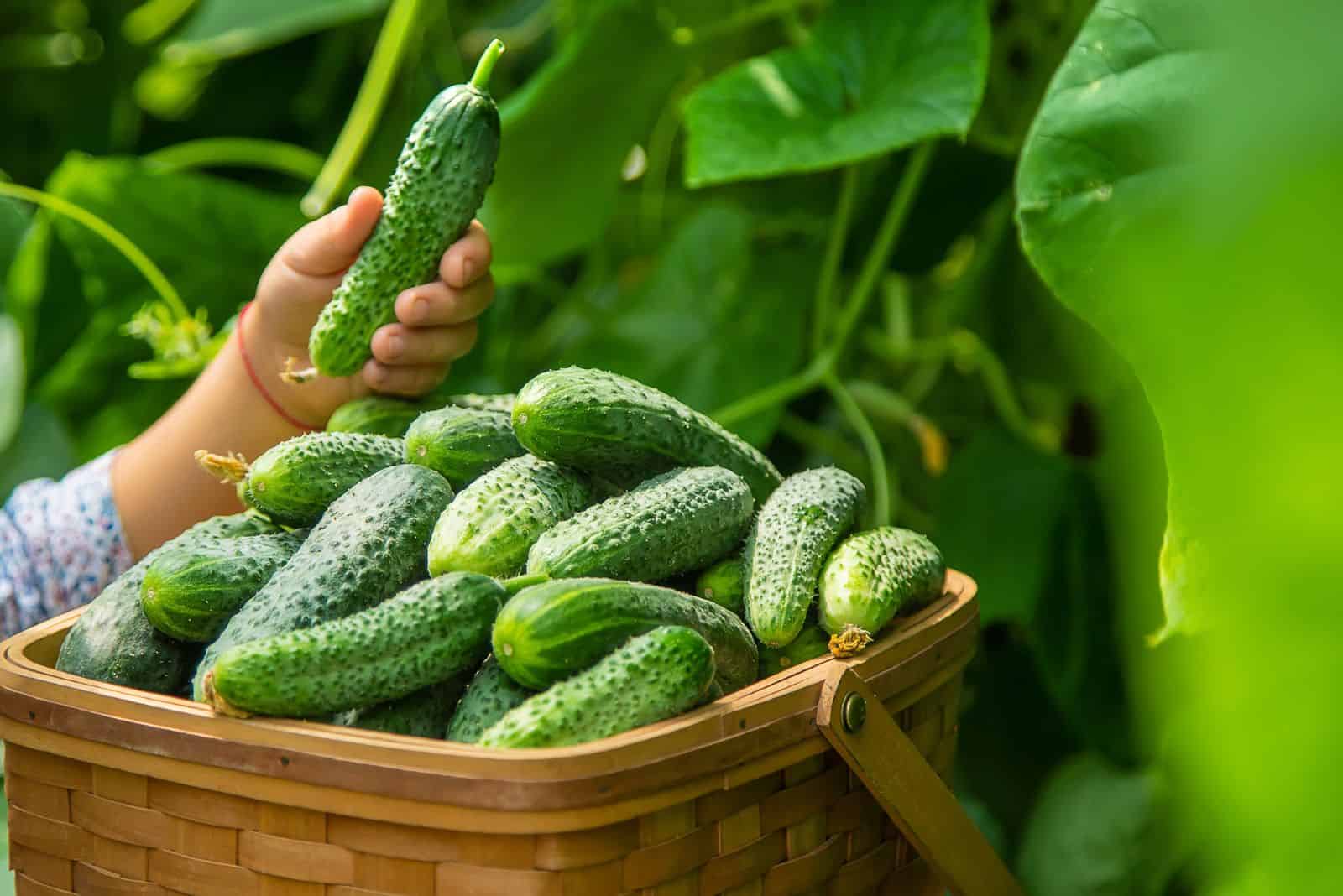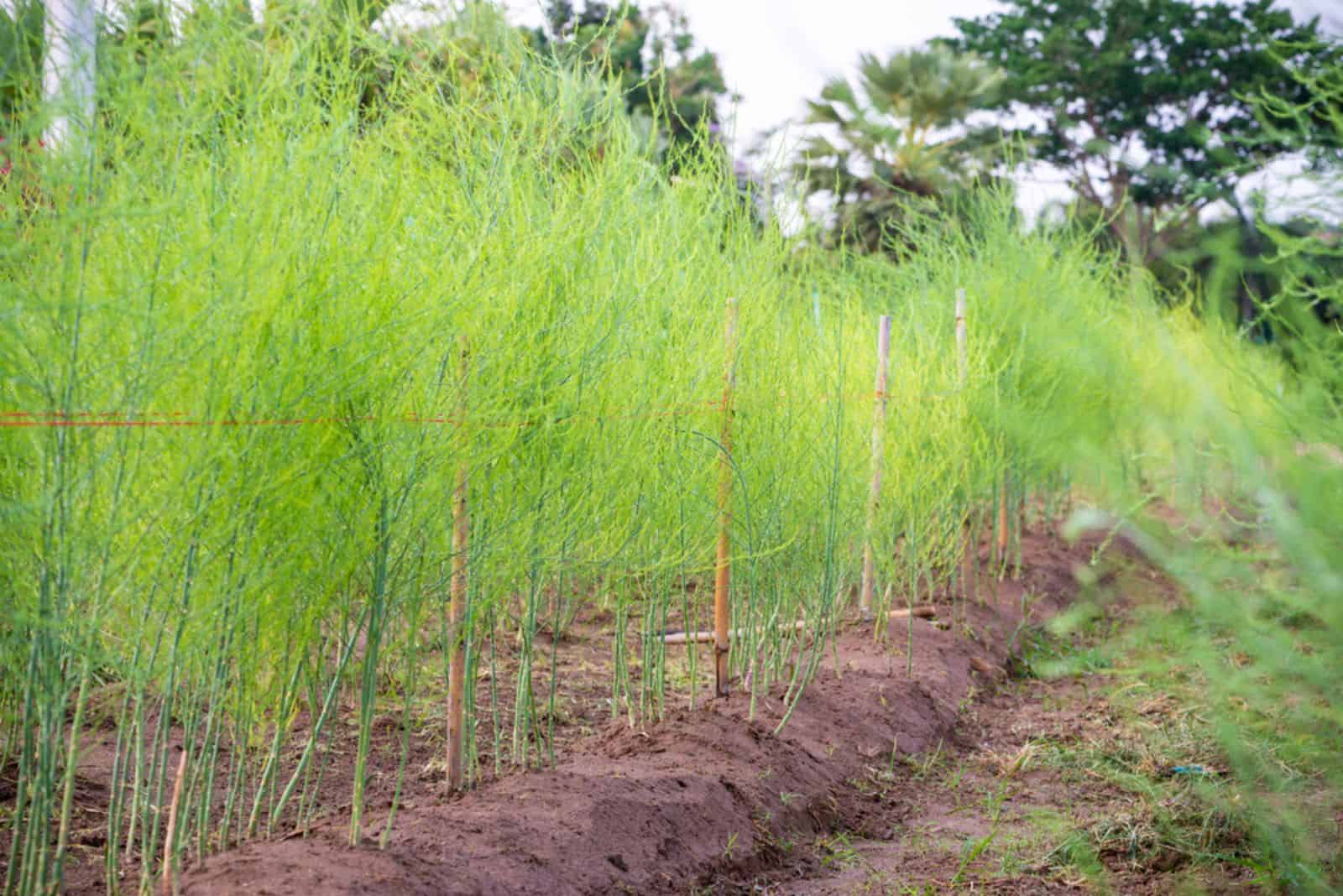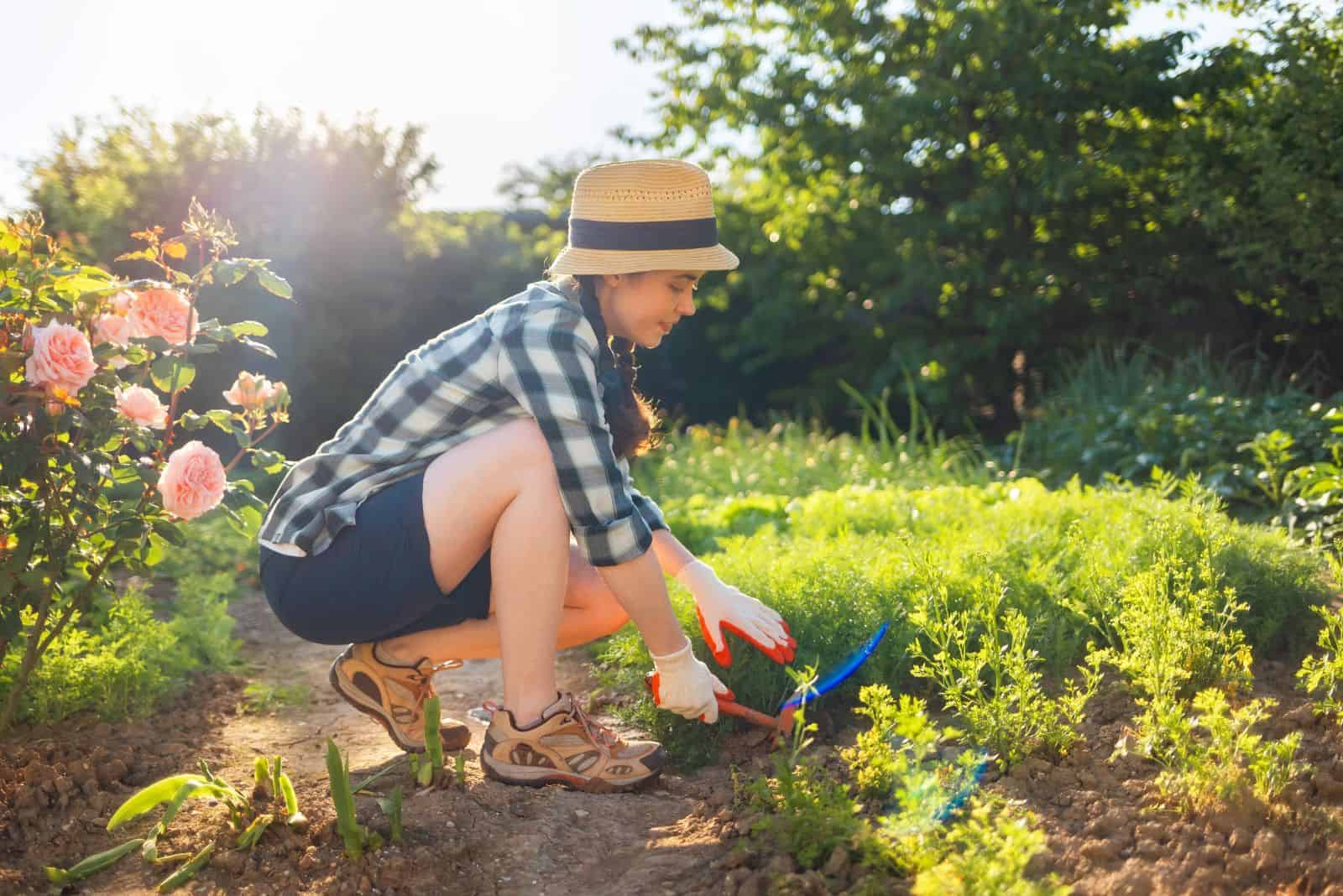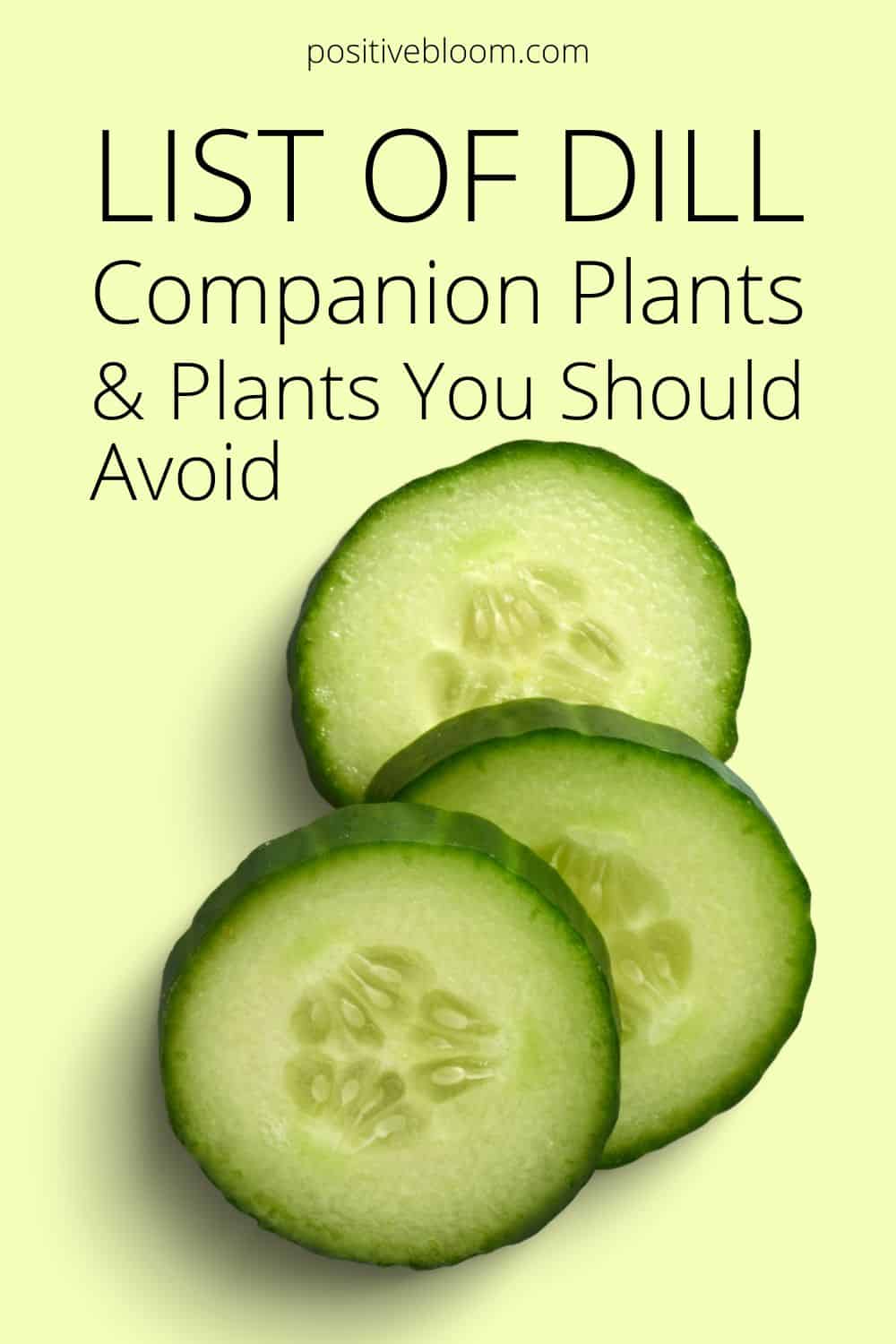Dill is such a famous plant because this herb has low care requirements. Dill also smells amazing and has many culinary uses.
I mean, is there anything better than the taste of tartar sauce or lemon dill salmon?
Growing dill isn’t a hard task once you learn its requirements, but it’s also important to know some good dill companion plants because companion planting can help all your plants grow better.
You should also know what not to plant with dill to avoid damaging it. There are many benefits of companion planting, and if you want to know how this works for dill, you are in the right place.
Here is some basic info about the dill plant:
[table id=497 /]
Let’s get started!
The Best Dill Companion Plants
It’s a good idea to grow one plant species next to another for many reasons, for instance, your garden needs pollinators, so growing plants that attract pollinators is beneficial.
Pests can be annoying and destroy everything, so growing plants that repel pests is a wonderful idea.
Another reason is light; some plant species thrive in partial shade, so planting them under taller plants will prevent direct sunlight from reaching their leaves.
Finally, you can’t deny the fact that your home garden looks way prettier if you combine plants that complement each other in terms of appearance.
According to the companion planting guide for herbs, multiple combinations of plants grow well when planted with certain herb species.
Dill is an amazing herb; it tastes great, smells amazing, and attracts insects such as mantises, parasitic wasps, lacewings, hoverflies, and ladybugs. Additionally, it repels pests such as aphids, spider mites, cabbage worms, cabbage loopers, and corn earworms.
So, the best companion plants for dill include cucumbers, asparagus, corn, lettuce, onion, basil, and plants from the Brassica genus.
Let’s find out more!
Cucumbers
Cucumbers are pretty hardy plants, and you can see them in many home gardens all around the world.
These plants have a lot of health benefits and should be a part of a regular diet.
Before I tell you more about why to plant it with dill, here’s some basic info about cucumbers
[table id=498 /]
Cucumbers are great companion plants for dill. The first reason is that cucumbers are prone to cucumber beetles, which can kill cucumbers if you don’t treat them.
Instead of spending time removing beetles and reviving your cucumbers, it’s better to prevent them in the first place.
If you plant your cucumbers near dill, the herb will attract braconid wasps which will repel beetles.
Dill will make your cucumber taste better and won’t inhibit its growth.
Asparagus Plants
What’s great about the asparagus plant is that it’s ready for harvest way earlier than other common veggies.
Let’s first see some basic info about asparagus:
[table id=499 /]
Aphids will infest asparagus during all its growth stages, so we must find a way to repel these pests and save our asparagus from death.
There’s one simple solution to this problem. Dill makes a good companion plant to asparagus as it deters aphids and attracts beneficial insects, such as ladybugs and lacewings.
These insects will eat aphids as soon as they spot them.
You don’t have to worry about dill affecting the asparagus plant regarding taste and growth.
There’s a similar situation with chervil, which also attracts aphids, but dill will take care of that.
Corn
Is there anyone who doesn’t like corn? Unfortunately, we aren’t the only ones that enjoy eating this delicious vegetable. Corn earworms, aphids, and cutworms are the most common pests that infest corn plants.
Here’s some basic info about corn:
[table id=500 /]
The abovementioned pests don’t have a favorite corn growth stage, and they’ll attack anytime.
Parasitic wasps quickly take care of these predators and are attracted by dill.
Plant dill and corn close to each other and let your dill reach the flowering stage for the best results.
Lettuce
One of the tastiest leafy greens you can grow is lettuce. Bitter lettuce is the only thing we don’t like regarding these veggies.
Let’s first see some basic info about lettuce:
[table id=501 /]
Caterpillars love lettuce more than anything in the world, and it’s pretty hard to repel them… unless you plant dill nearby.
Dill will attract predatory insects that destroy caterpillars and keep your lettuce healthy and happy. True friends, right?
Onion
The smell of onion and dill are both quite strong. In this case, that’s a great thing.
Here’s some basic info about onions:
[table id=502 /]
Interestingly, the potent smells of dill and onion can keep various pests at bay.
For instance, Japanese beetles hate these smells and won’t feel welcome in your home garden.
You can also grow garlic and chives near your dill, and it will have a similar effect.
But there’s one thing you should be extremely careful about – never grow your dill near fennel. It looks like an onion, but dill can stunt the growth of this plant, and cross-pollination can occur.
Basil
I’m sure I don’t need to tell you about the amazing scent and taste of basil. Planting it near your dill will benefit both.
Be careful to give enough light and water to your basil as it can wilt.
Let’s start with some basic info about the basil plant:
[table id=503 /]
The main goal of growing dill and basil near each other is not related to pests, but to taste.
Basil will enhance the taste of dill and vice versa.
Brassica Plants
All plants from the Brassica genus make great companion crops for dill.
Here’s some basic info about this species:
[table id=505 /]
Cabbage worms and cabbage loopers adore Brassica plants. To save your Brussels sprouts, broccoli, collards, kohlrabi, and other veggies from the Brassicaceae family from these pests, plant them near dill.
I know that it may sound weird that broccoli attracts pests. Yes, broccoli is man-made, but it still attracts the same insects as other plants from the same family.
What Not To Plant Near Dill In The Garden
You’ve learned what to plant near dill, and now it’s time to find out what should never be planted near dill.
Nightshade plants (bell peppers, eggplants, potatoes, tomatoes), umbellifers (parsley, carrot, caraway, cilantro), and lavender shouldn’t be planted near dill!
Let’s see the reasons!
Nightshade Plants
Let’s first discuss which plants belong to the nightshade family. Bell peppers, potatoes, eggplants, and tomato plants are nightshades and should never be planted with dill.
There has been a lot of discussion about planting tomato plants and dill near each other. From my experience, these two don’t make good companion plants.
The truth is that some herbs repel tomato hornworms, but dill may inhibit the growth of tomatoes in the last stages of growth.
If you decide on planting these two together, I recommend picking the tomatoes before dill spreads on the ground. Young dill won’t harm your tomatoes.
The same goes for eggplants, bell peppers, and potatoes.
Umbellifers
Another group of veggies that don’t get along with dill are umbellifers. These are the veggies from the Umbelliferae (Apiaceae) family. I mentioned fennel, but carrots, caraway, parsley, cilantro, and celery belong to this family.
For instance, carrots and dill have similar growing requirements, and it would be great if you planted them nearby.
However, these two can cross-pollinate because they are relatives. Plant them far away if you don’t want bad-tasting dill or carrots.
The same goes for other herbs, such as cilantro. Avoid planting cilantro and dill together if you want to grow herbs in pots.
Lavender
Unfortunately, lavender and dill won’t be friends in your herb garden.
Here’s some basic info about lavender:
[table id=504 /]
Lavender will go through all its growth stages if provided with enough direct light. Dill will literally take the sunlight away from lavender and inhibit its growth.
Therefore, no matter how attractive it looks, planting lavender and fast-growing dill isn’t a good idea.
FAQs
What is the difference between dill weed and dill seed?
The difference between dill weed and dill seed is that dill weed refers to this herb’s green components (greenery), such as the foliage and stems. In contrast, dill seed is the fruit of this plant.
Where does dill grow?
Scientifically known as Anethum graveolens, dill originally grew in the Mediterranean and Eurasia. It’s a hardy plant, which is why it’s commonly grown in gardens worldwide.
What can you make with dill?
Dill is an excellent herb that tastes amazing in soups, sauces, and salads. One of the best dishes you can make with dill includes lemon dill salmon, tartar sauce, and dill potato salad.
Wrapping Up
Dill is one of my favorite herbs for many reasons, and your garden will love it too!
If you decide to grow dill in your home garden, now you know some excellent dill companion plants to go with it.
You’ve seen that some plants do not get along well with dill, so avoid growing them near them at any cost.
Until next time!
Like this post? Share or pin it for later!

